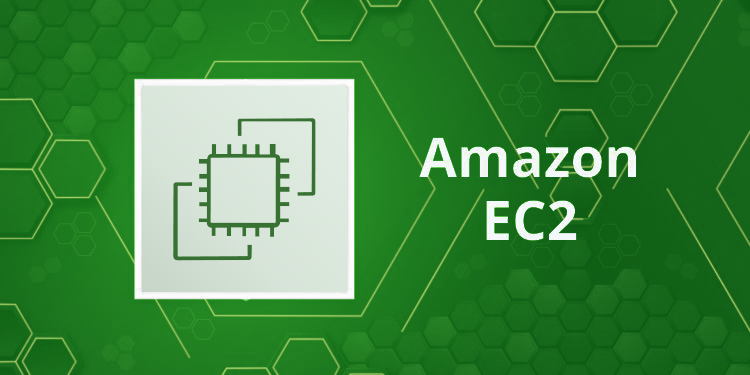Note: This blog post is part of the series on AWS Compute by AvoTechs. If you have landed here from a place other than the overview blog post, We suggest you start with AWS Compute – Virtual machines, containers or serverless
Imagine picking up your laptop, putting it in a box and shipping it off to Amazon (I know, it’s normally the other way around!) to get its data and processing power hosted in a secure cloud only controlled by you. It sounds a bit bizarre, doesn’t it? What if I told you that from the minute it’s switched on at Amazon, you stop being responsible for hardware costs, network problems and electricity outages. On top of that, you even get a 99.95% Monthly Uptime percentage guarantee from Amazon. Sounds a bit better, huh? What if with a click of a button you could now have double the
processing power or disk space, without having to mingle with hardware yourself? Or even better, what if you could clone your laptop once, twice or even 5 times with a few clicks? There’s only one way to answer that….

The most popular compute option available to us on AWS is Amazon Elastic Compute Cloud (Amazon EC2). In a nutshell, it is an infrastructure on demand service, hosted for us on AWS. As users, we are responsible for everything that happens on the machine, but Amazon takes over the burden of hardware, network, electricity costs, etc.
Based on the needs of your application, you get to choose from these, rather self-explanatory instance families optimised for your needs, each breaking down further into various instance sizes
- General Purpose
- Compute Optimised
- Memory Optimised
- Accelerated Computing
- Storage Optimised
For detailed information on each family, please refer to the standard documentation:
https://aws.amazon.com/ec2/instance-types/
When it comes to storage options, again depending on our requirement, we can choose from instances with instance storage only, for data which lives as long as the instance remains active or ones with either an EBS (Elastic Block Store) or an EFS (Elastic File System) attached to it which retain the data even after the instance is shut down.
Evaluation of Amazon Elastic Compute Cloud – EC2
Flexibility of Amazon EC2
Amazon EC2 offers you more than 500 instance types to choose from, depending on your needs. With every instance, you additionally get to choose from more than 5500 AWS & trusted third-party AMIs (Amazon Machine Images) each representing a different setup of OS and its version, installed software, etc. Additionally, you can always build and save your own AMIs.
AvoTechs Flexibility Grade: 5 (1 – not flexible, 5 – very flexible)
Maintainability of Amazon EC2
We could rephrase maintainability as responsibility for the proper functioning of a server. The easier a solution is to maintain, the more robust and less problem-prone it may be. EC2 takes care of hardware and network but leaves you7 with the Operating System and all of the Software installed on it. It is your responsibility to ensure that the OS is patched in a timely manner and it is you who needs to keep the installed software up to date.
AvoTechs Maintainability Grade: 2 (1 – difficult to maintain, 5 – easy to maintain)
Scalability of Amazon EC2
We need to differentiate between two types of scalability approaches:
- Horizontal scalability – increasing the number of machines
- Vertical scalability – increasing the processing power of a single instance
With the help of a Load Balancer you can define rules when an EC2 instance should be horizontally scaled. If configured correctly, it can spin up additional resources when required and shut them down once the demand vanishes. Vertical scaling is also possible but it isn’t so seamless. The reason being that EC2 instances need to be stopped before the instance type can be changed.
AvoTechs Scalability Grade: 4 (1 – not scalable, 5 – very scalable)
Cost of Amazon EC2
When talking about costs, you need to remember that an EC2 instance is essentially a reserved computer which is exclusively available for you to use. Therefore, even if the number of requests to process is small and the machine sits mainly idle, we still pay for the hardware that’s reserved for us. The real need for a dedicated virtual machine arises once our app gets busy enough to consume the reserved hardware.
What’s good about EC2 is that you can launch a virtual machine completely free in your first year at AWS providing you can fit within the free tier limits – https://aws.amazon.com/free/ ! But if your requirement is more sophisticated, the pricing model of EC2 is extremely transparent and within the reach of any size company. As an example, let’s look at 3 on-demand configs based in the EU (Ireland) region:
| Category | Instance Type | vCPUs | Memory (GB) | Network Bandwidth (Gbps) | Elastic Block Storage | Cost per month (USD) |
|---|---|---|---|---|---|---|
| General Usage | t3.small | 2 | 2 | 5 | 30 GB (SSD) | 19.94 |
| Compute Optimized | c7g.2xlarge | 8 | 16 | 15 | 120 GB (SSD) | 239.57 |
| Storage Optimized | i3.metal | 64 | 512 | 25 | 2 TB (SSD) with 32000 provisioned IOPS | 6604.54 |
As much as the last option is rather on the expensive side, the hardware behind it is suitable to host a top performance ERP system and is probably still too much. It just comes to show how flexible the EC2 offering really is!
If you are looking for something more cost-effective, AWS also has you covered. It offers a service called “Spot instances” where you can decide how much you are willing to pay and if a spot becomes available – you are granted the instance until somebody overbids you. Another option to consider to cut down on the costs is the use of Savings Plan where you commit to an instance for a longer time.
If you are a bigger player, Amazon also offers dedicated hosts which essentially provision a physical EC2 server and make it available solely for your use.
AvoTechs Cost Grade: 4 (1 – expensive, 5 – cost-effective)
Confused with the numbers? AvoTechs can help you find the most optimal solution to suit your needs. Reach out now for more info. – contact
Would you like to find out more about other AWS Compute Services Amazon has to offer? Do you want to see when we recommend which option? Go back to the Overview article and navigate your way around from there.




